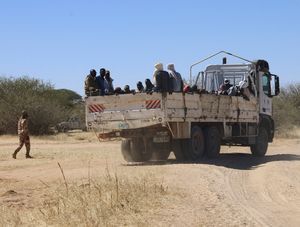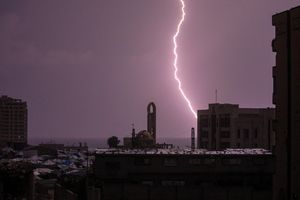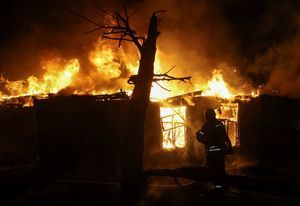![Palestinians gather to receive food from a charity kitchen, amid a hunger crisis, in Gaza City, Monday. Reuters-Yonhap]](https://contents-cdn.viewus.co.kr/image/2025/07/CP-2023-0309/31136446.jpg)
The Integrated Food Security Phase Classification (IPC) noted that Gaza has been teetering on the brink of famine for two years, and recent developments have “dramatically worsened” the situation, particularly due to the “increasingly stringent blockades” imposed by Israel. The report details specific criteria for famine classification, including thresholds in food consumption, percentages of acutely malnourished households and children, and elevated mortality rates, all of which underscore the severity of the current crisis.
While a formal famine declaration is rare and requires specific data that has been largely unavailable due to limited access to and within Gaza, independent experts argue that the signs are clear.
Alex de Waal, author of “Mass Starvation: The History and Future of Famine” and executive director of the World Peace Foundation, told The Associated Press, “Just as a family physician can often diagnose a familiar patient based on visible symptoms without lab tests, we can interpret Gaza’s symptoms. This is famine.”
The IPC report, based on data through July 25, indicates that the crisis has reached “an alarming and deadly turning point.” Famine thresholds for food consumption have been reached in most of Gaza, with levels at their lowest since the war began. In Gaza City, nearly 17% of children under five are acutely malnourished.
UN Secretary-General Antonio Guterres stated, “This is not a warning. It is a reality unfolding before our eyes,” adding that the “trickle of aid must become an ocean.” The IPC alert calls for immediate and large-scale action, warning of widespread death if prompt measures are not taken.
Humanitarian workers on the ground paint a grim picture. Rachael Cummings of Save the Children International in Gaza described children searching for food in trash piles outside their office. Rob Williams, CEO of War Child Alliance, emphasized that anything less than a ceasefire and a return to pre-blockade UN-led aid systems would condemn tens of thousands to death, starvation, and disease.
Dr. Tarek Loubani, medical director for Glia in Gaza, warned, “All currently malnourished children will die unless there’s a rapid and consistent reversal of the situation.”
Throughout the conflict, Israel has imposed varying degrees of aid restrictions. In March, it halted all goods, including fuel, food, and medicine, to pressure Hamas to release hostages. While restrictions were eased in May, a new US-backed aid delivery system has been marred by chaos and violence.
Despite Israel’s claims of no limits on aid truck entries, UN agencies and aid groups argue that current measures are insufficient to address the worsening hunger crisis. Tjada D’Oyen McKenna, head of Mercy Corps, stated, “The fastest and most effective way to save lives right now is to open every border crossing.”
Israeli Prime Minister Benjamin Netanyahu has maintained that no one is starving in Gaza and that Israel has provided sufficient aid. However, even Israel’s closest ally seems to disagree, with President Donald Trump remarking, “Those children look very hungry.”
The situation in Gaza remains critical, with urgent action needed to prevent a humanitarian catastrophe of unprecedented proportions.









Most Commented